class: title-slide, inverse, center, middle # Lecture 1: distance sampling & density surface models <div style="position: absolute; bottom: 15px; vertical-align: center; left: 10px"> <img src="images/02-foundation-vertical-white.png" height="200"> </div> --- class: inverse, middle, center # Why model abundance spatially? --- class: inverse, middle, center # Maps --- .pull-left[ 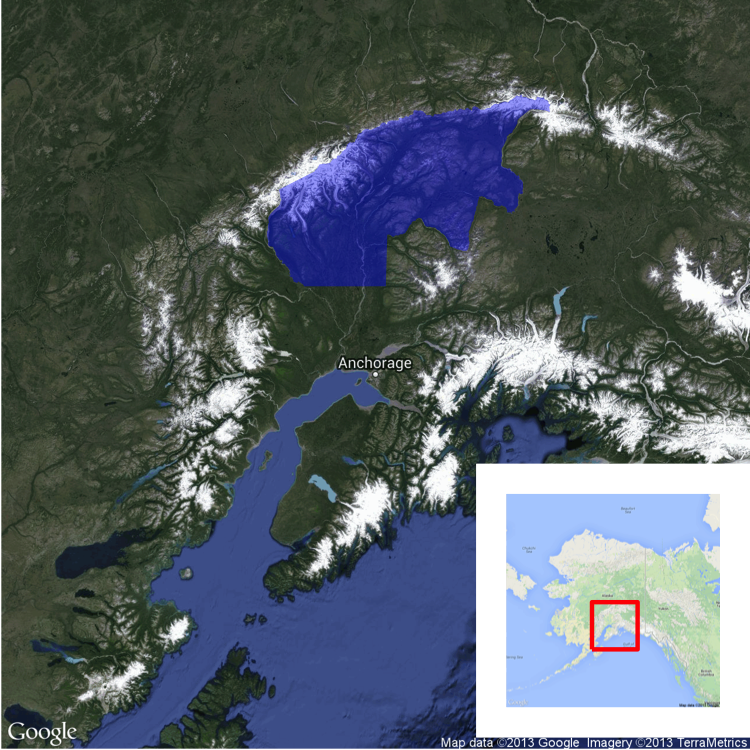 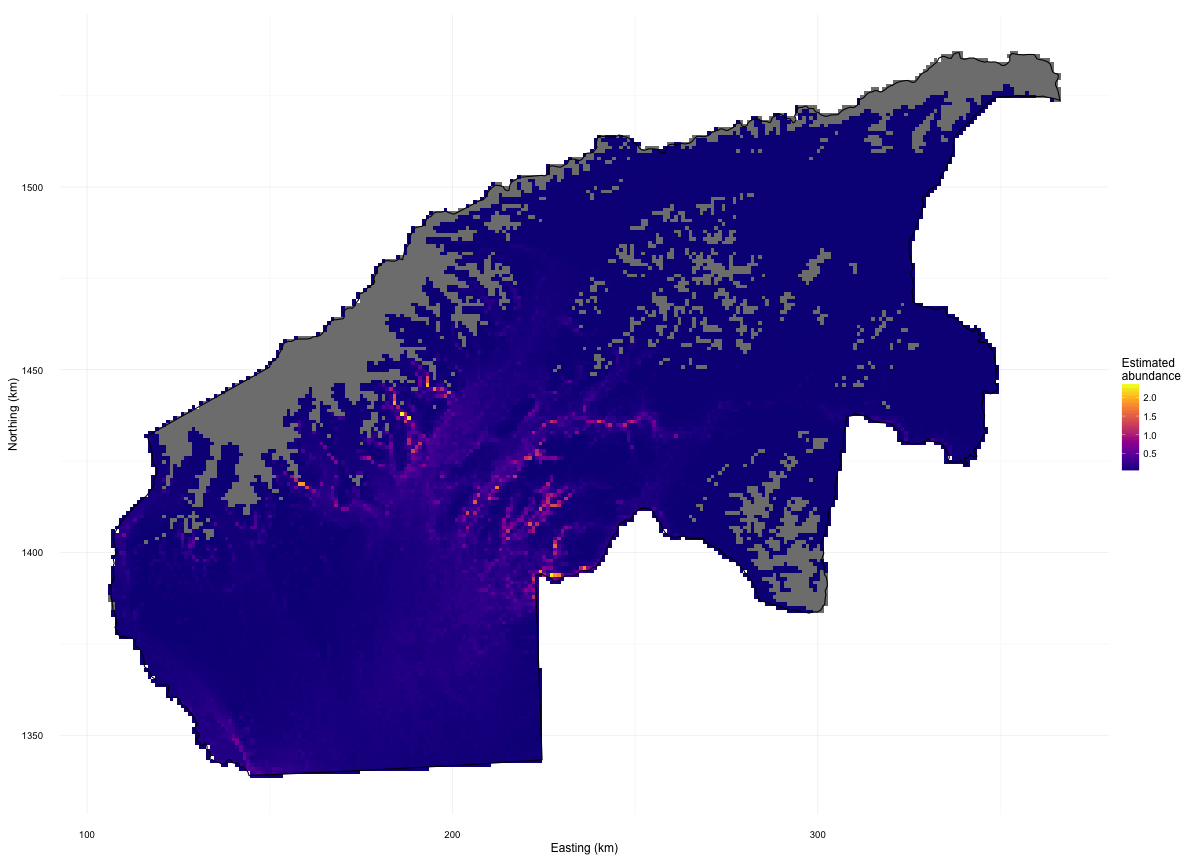 ] .pull-right[ - Black bears in Alaska - Heterogeneous spatial distribution ] --- class: inverse, middle, center # Spatial decision making --- .pull-left[ 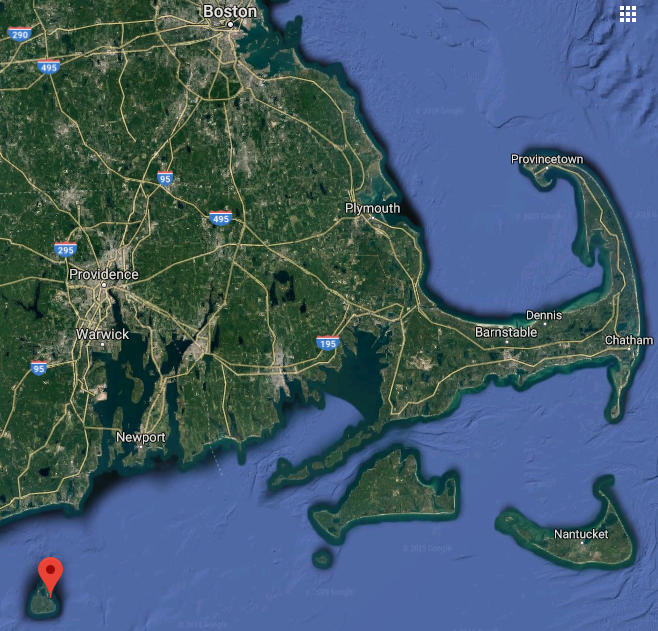 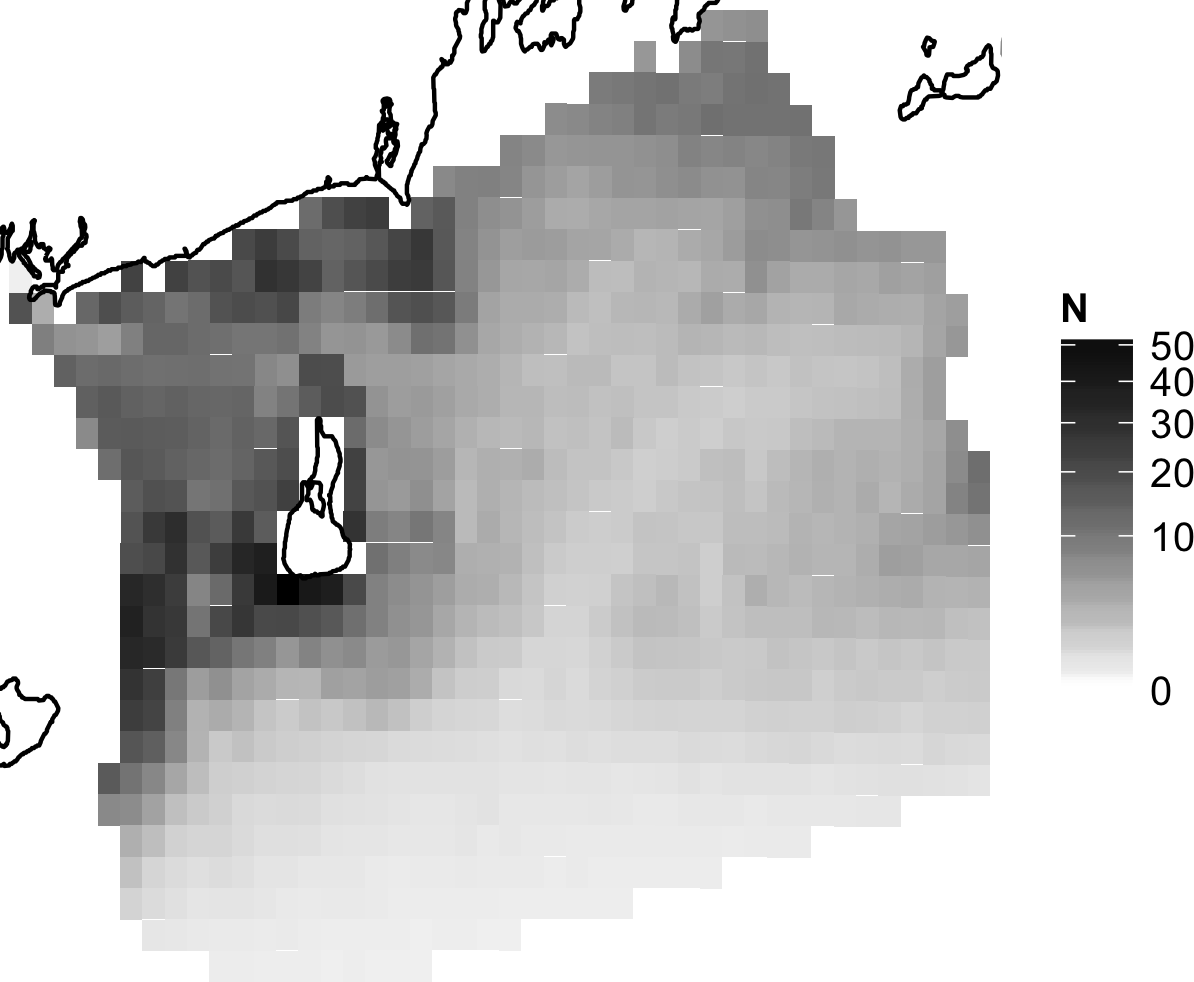 ] .pull-right[ - Block Island, Rhode Island - First offshore wind in the USA - Spatial impact assessment 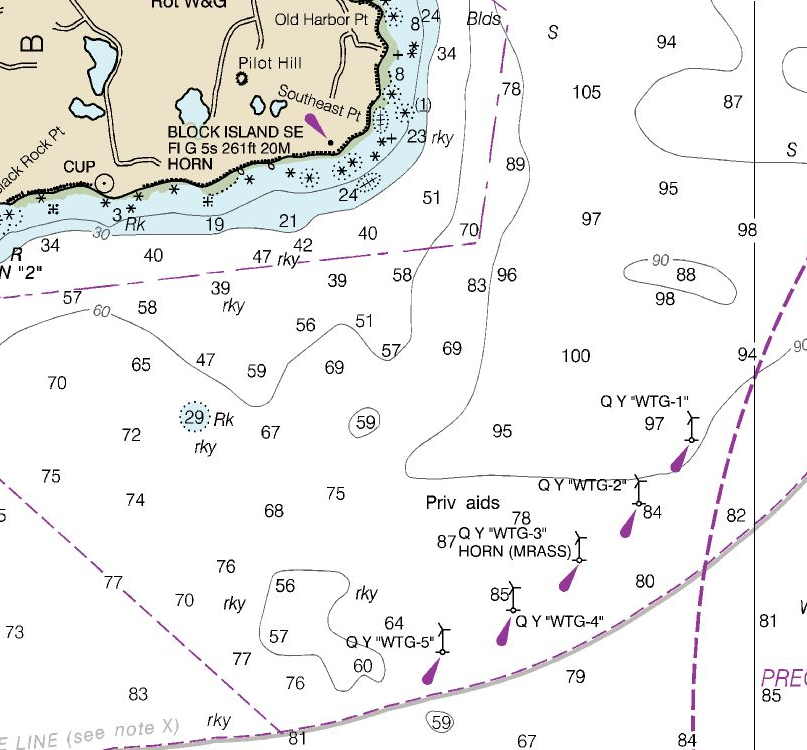 ] --- class: inverse, middle, center # Back to regular distance sampling --- # How many animals are there? (500!) <!-- --> --- # Plot sampling 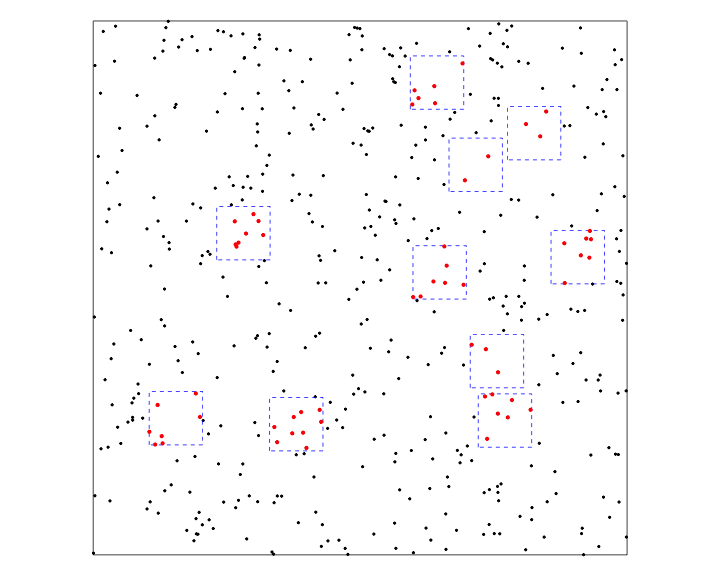<!-- --> - Surveyed 10 quadrats (each `\(0.1^2\)` units) - Total covered area `\(a=10 * 0.1^2 =\)` 0.1 - Saw `\(n=\)` 59 animals - Estimated density `\(\hat{D}=n/a=\)` 590 - Total area `\(A=1\)` - Estimated abundance `\(\hat{N}=\hat{D}A=\)` 590 --- # Strip transect 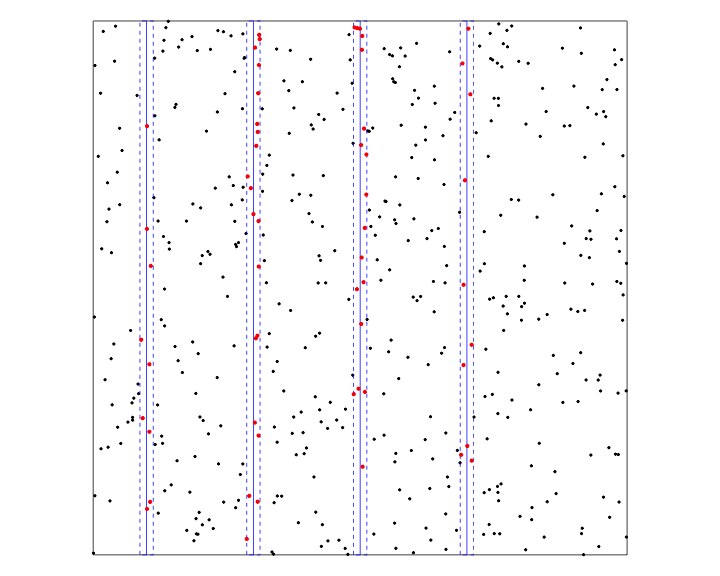<!-- --> - Surveyed 4 lines (each `\(1*0.025\)` units) - Total covered area `\(a=4*1*0.025 =\)` 0.1 - Saw `\(n=\)` 57 animals - Estimated density `\(\hat{D}=n/a=\)` 570 - Total area `\(A=1\)` - Estimated abundance `\(\hat{N}=\hat{D}A=\)` 570 --- # Detectability matters! - We've assumed certain detection so far - This rarely happens in the field - Distance to the **object** is important - Detectability should decrease with increasing distance --- # Distance and detectability <img src="images/dolphins.jpg" alt="Dolphins near and far from the bow of a ship. Credit Scott and Mary Flanders"> <small>Credit <a href="http://www.nordhavn.com/egret/captains_log_sept11.php">Scott and Mary Flanders</a></small> --- # Line transect 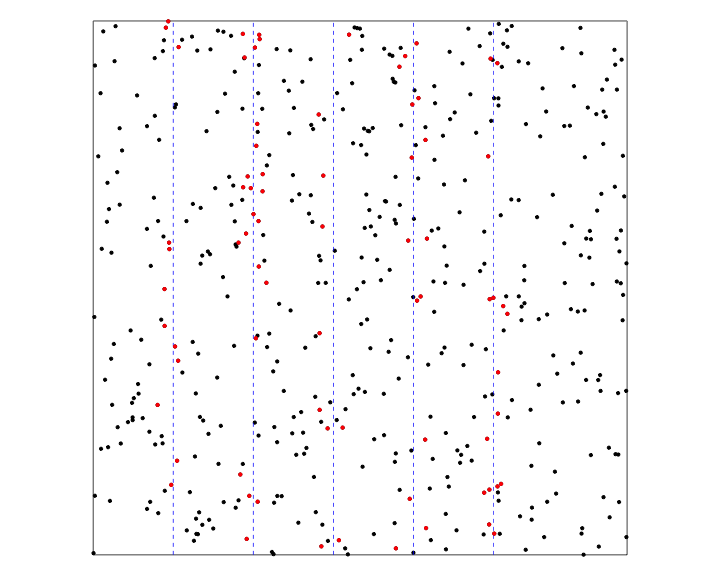<!-- --> --- # Line transects - distances 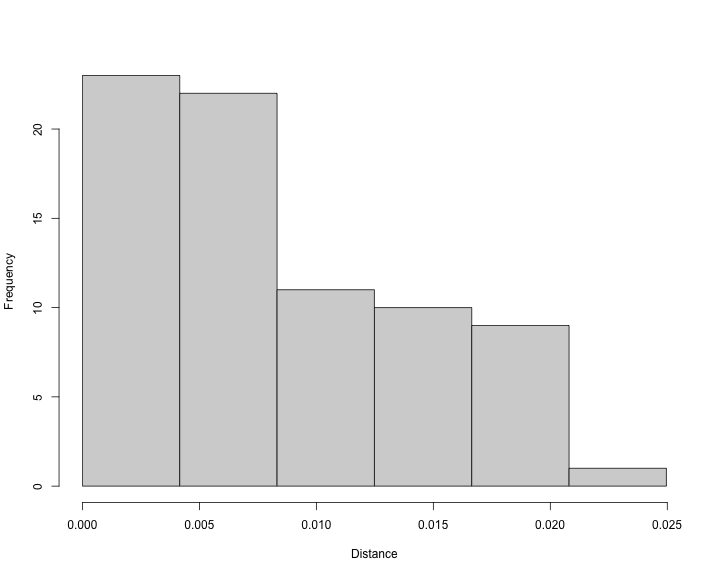<!-- --> - Distances from the **line** (sampler) to animal - Now we recorded distances, what do they look like? - "Fold" distribution over, left/right doesn't matter - Drop-off in # observations w. increasing distance --- # Distance sampling animation 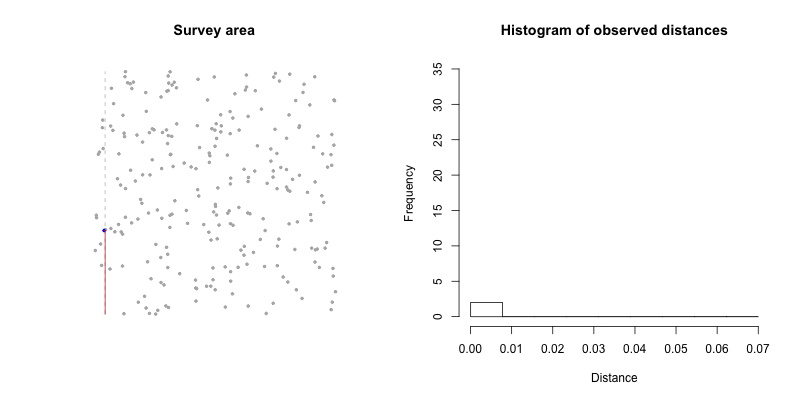 --- # Detection function 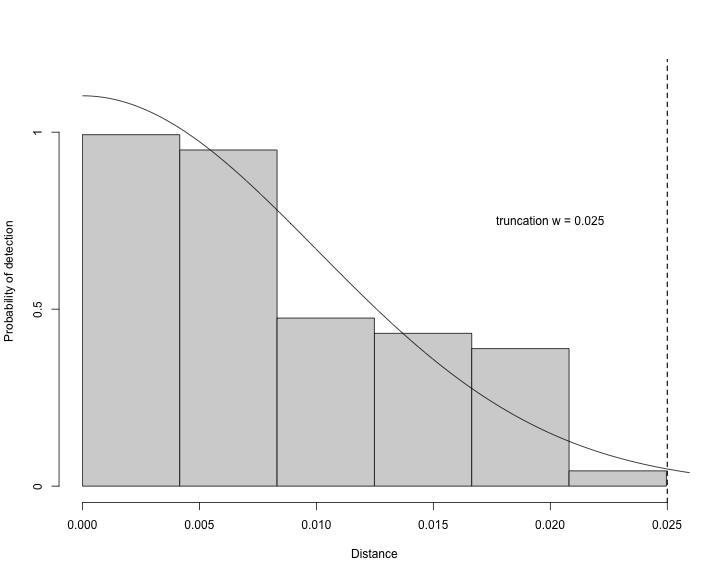<!-- --> --- # Distance sampling estimate - Surveyed 5 lines (each area 1 `\(*\)` 2 `\(*\)` 0.025) - Total covered area `\(a=\)` 5 `\(*\)` 1 `\(*\)` (2 `\(*\)` 0.025) = 0.25 - Probability of detection `\(\hat{p} =\)` 0.546 - Saw `\(n=\)` 76 animals - Inflate to `\(n/\hat{p}=\)` 139.198 - Estimated density `\(\hat{D}=\frac{n/\hat{p}}{a}=\)` 556.8 - Total area `\(A=1\)` - Estimated abundance `\(\hat{N}=\hat{D}A=\)` 556.8 --- # Reminder of assumptions 1. Animals are distributed independent of lines 2. On the line, detection is certain 3. Distances are recorded correctly 4. Animals don't move before detection --- # What are detection functions? - `\(\mathbb{P}\left( \text{detection } \vert \text{ animal at distance } x \right)\)` - "Integrate out distance" == "area under curve" == `\(\hat{p}\)` - Many different forms, depending on the data - All share some characteristics <!-- --> --- # Fitting detection functions (in R!) - Using the package `Distance` - Function `ds()` does most of the work - More on this in the practical! ```r library(Distance) df_hn <- ds(distdata, truncation=6000) ``` --- # Horvitz-Thompson-like estimators - Once we have `\(\hat{p}\)` how do we get `\(\hat{N}\)`? - Rescale the (flat) density and extrapolate $$ \hat{N} = \frac{\text{study area}}{\text{covered area}}\sum_{i=1}^n \frac{s_i}{\hat{p}_i} $$ - `\(s_i\)` are group/cluster sizes - `\(\hat{p}_i\)` is the detection probability (from detection function) --- # Hidden in this formula is a simple assumption - Probability of sampling every point in the study area is equal - Is this true? Sometimes. - If (and only if) the design is randomised --- # Many faces of randomisation <img src="dsm1-refresher-what_is_a_dsm_files/figure-html/randomisation-1.png" width="\textwidth" /> --- # Randomisation & coverage probability - H-T equation above assumes even coverage - (or you can estimate) <img src="images/bc_plan.png" width=35%> <img src="images/bad_coverage.png" width=45% align="right"> --- # Extra information 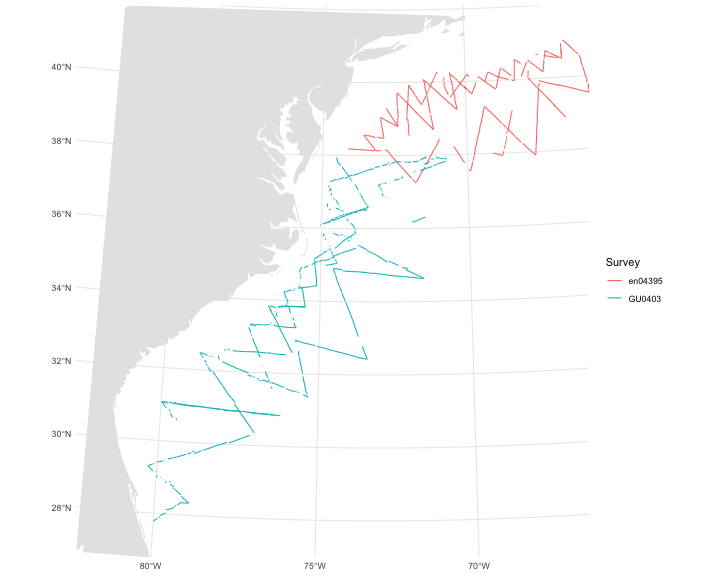<!-- --> --- # Extra information - depth 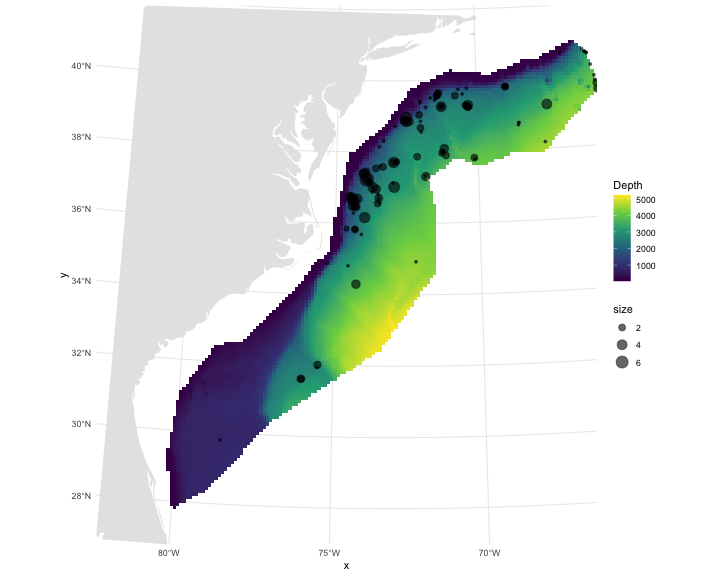<!-- --> --- # Extra information - SST 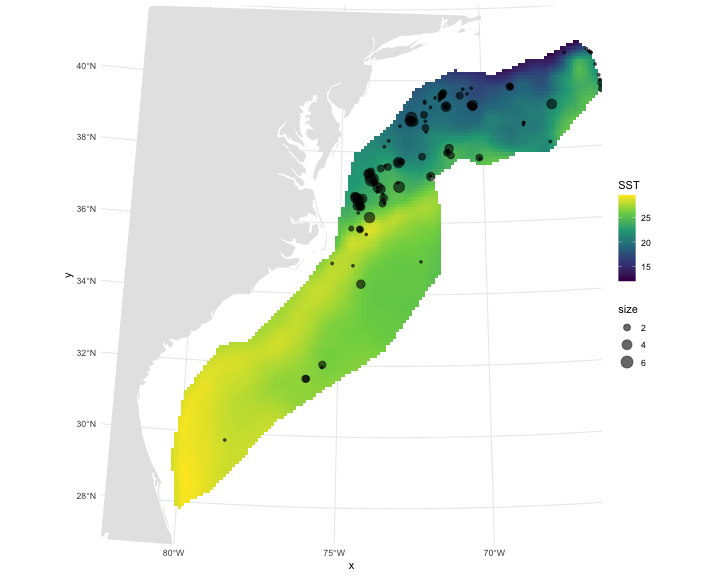<!-- --> --- class: inverse, middle, center # We should model that! --- # DSM flow diagram <img src="images/dsm-flow.png" alt="DSM process flow diagram" width=100%> --- # Modelling requirements - Account for effort - Flexible/interpretable effects - Predictions over an arbitrary area - Include detectability --- class: inverse, middle, center # Accounting for effort --- # Effort .pull-left[ 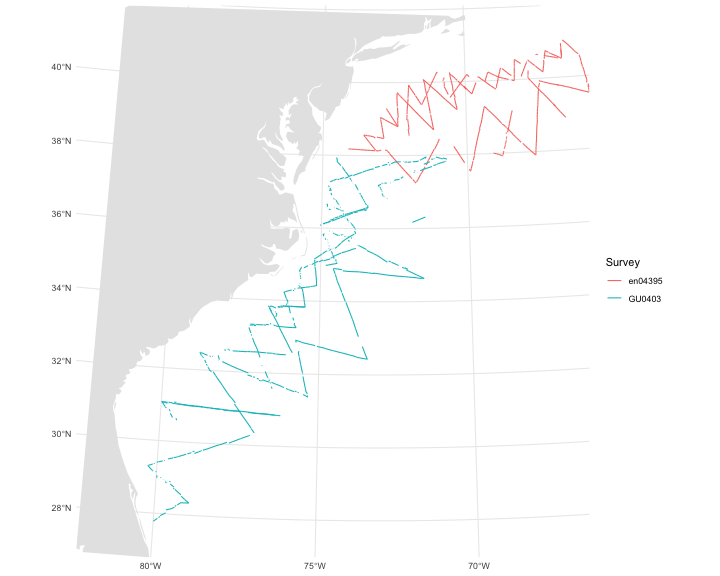<!-- --> ] .pull-right[ - Have transects - Variation in counts and covars along them - Want a sample unit w/ minimal variation - "Segments": chunks of effort ] --- # Chopping up transects <img src="images/dsmproc.png" alt="Physeter catodon by Noah Schlottman" width=80%> [Physeter catodon by Noah Schlottman](http://phylopic.org/image/dc76cbdb-dba5-4d8f-8cf3-809515c30dbd/) --- class: inverse, middle, center # Flexible, interpretable effects --- # Smooth response 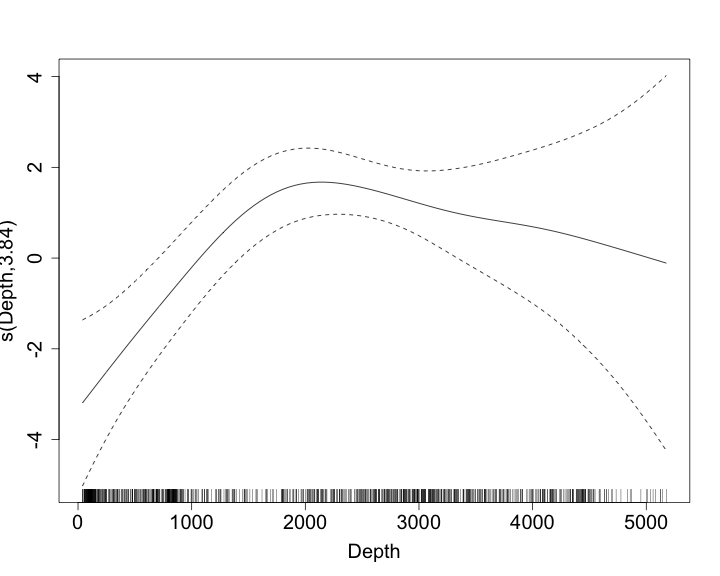<!-- --> --- # Explicit spatial effects 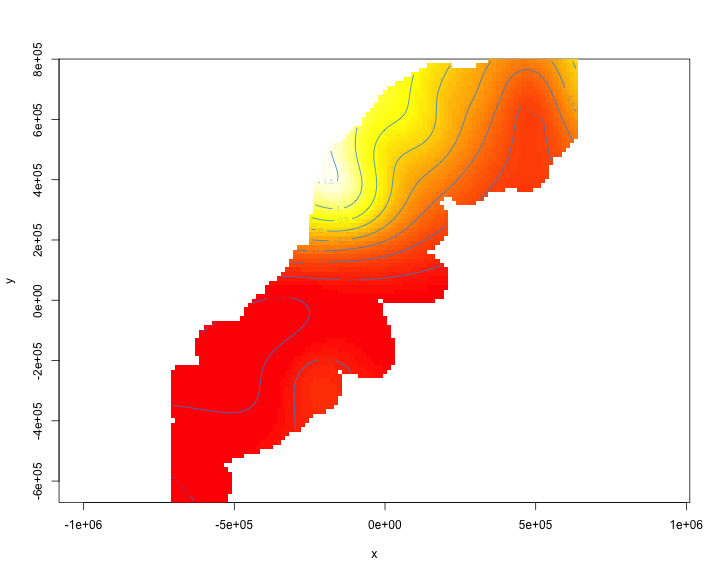<!-- --> --- class: inverse, middle, center # Predictions --- # Predictions over an arbitrary area .pull-left[ 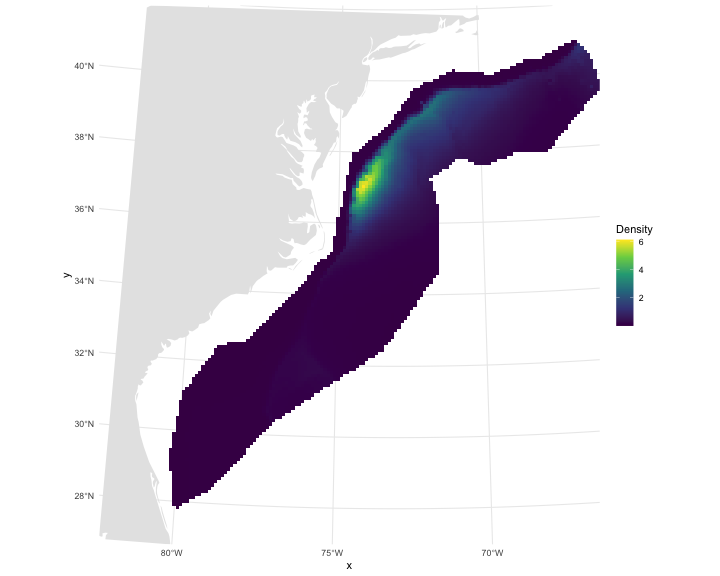<!-- --> ] .pull-right[ - Don't want to be restricted to predict on segments - Predict within survey area - Extrapolate outside (with caution) - Working on a grid of cells ] --- class: inverse, middle, center # Detection information --- # Including detection information - Two options: - adjust areas to account for **effective effort** - use **Horvitz-Thompson estimates** as response --- # Count model - Area of each segment, `\(A_j\)` - use `\(A_j\hat{p}_j\)` - 💭 effective strip width ( `\(\hat{\mu} = w\hat{p}\)` ) - Response is counts per segment - "Adjusting for effort"  --- # Estimated abundance - Effort is area of each segment - Estimate H-T abundance per segment $$ \hat{n}_j = \sum_i \frac{s_i}{\hat{p}_i} $$ (where the `\(i\)` observations are in segment `\(j\)`)  --- # Detectability and covariates - 2 covariate "levels" in detection function - "Observer"/"observation" -- change **within** segment - "Segment" -- change **between** segments - "Count model" only lets us use segment-level covariates - "Estimated abundance" lets us use either --- # When to use each approach? - Generally "nicer" to adjust effort - Keep response (counts) close to what was observed - **Unless** you want observation-level covariates --- class: inverse, middle, center # Data requirements --- # What do we need? - Need to "link" data - ✅ Distance data/detection function - ✅ Segment data - ✅ Observation data (segments 🔗 detections) More info on course website. --- 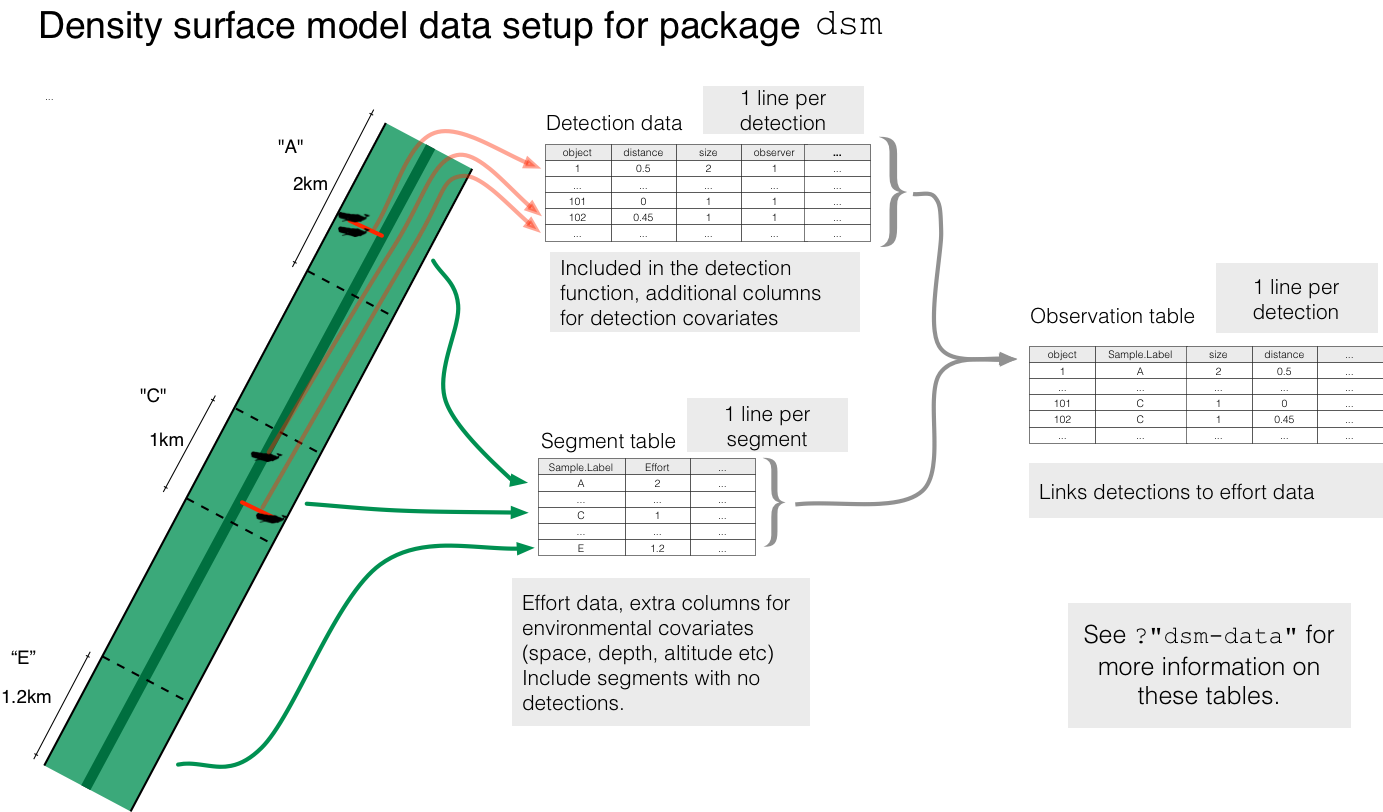 --- class: inverse, middle, center # Example data --- # Example data <img src="images/data_ships.png"> --- # Example data <img src="images/observers.png"> --- # Sperm whales .pull-left[ <img src="images/spermwhale.png" width="100%"> ] .pull-right[ - Hang out near canyons, eat squid - Surveys in 2004, US east coast - Thanks to Debi Palka (NOAA NEFSC), Lance Garrison (NOAA SEFSC) for data. Jason Roberts (Duke University) for data prep. ] --- # Recap - Model counts or estimated abundance - The effort is accounted for differently - Flexible models are good - Incorporate detectability - 2 tables + detection function needed